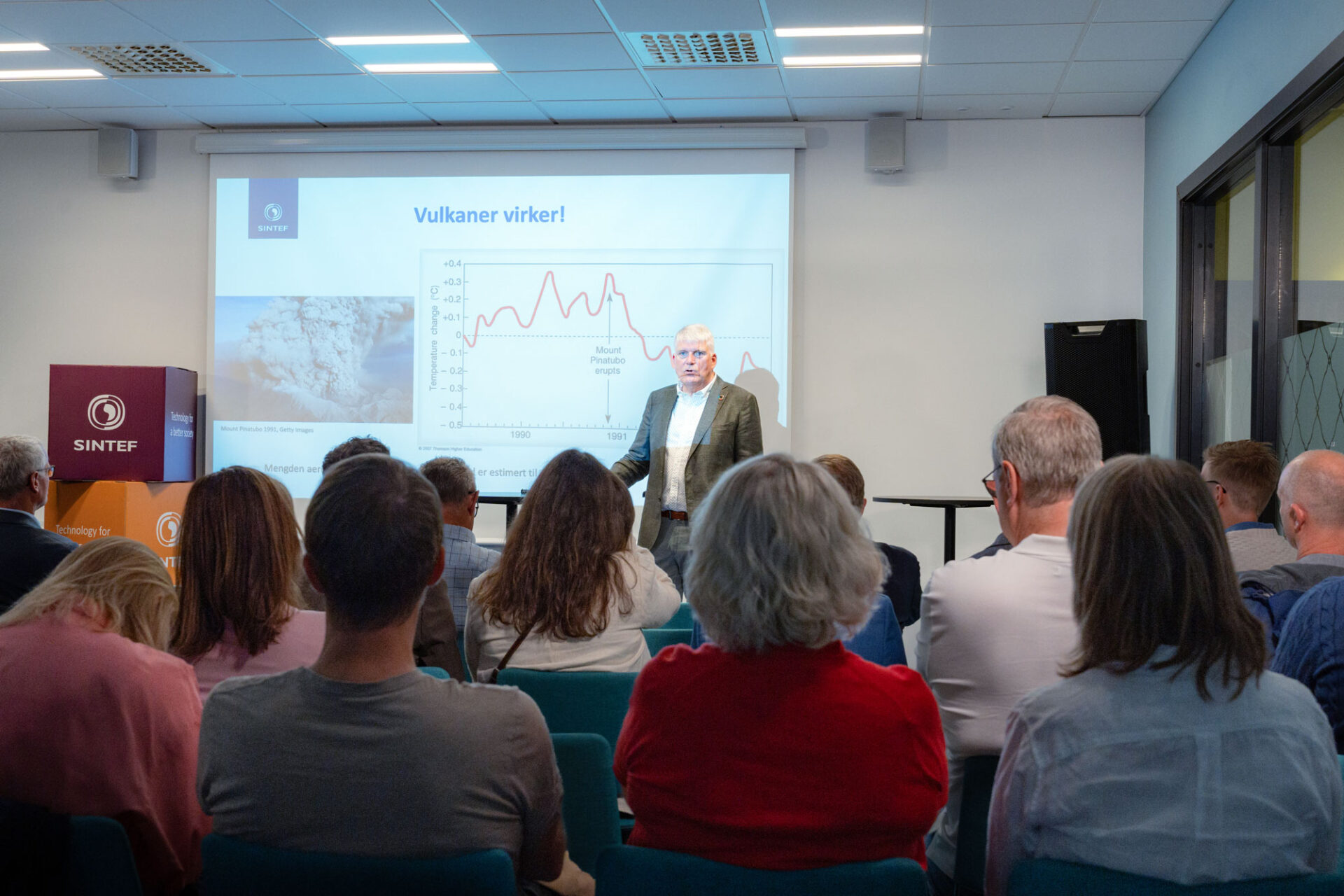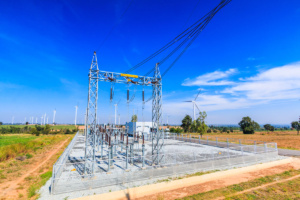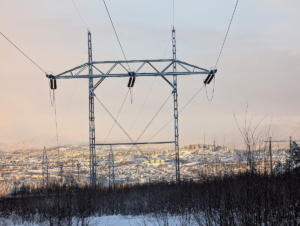A few years ago, “geoengineering” – the notion of intentionally changing the Earth’s climate to combat climate change – was considered a dirty word. However, have we now come to the point where we need to consider it as an option?
On Tuesday 13 August 2024, SINTEF EVP of Sustainability and Director of FME HYDROGENi Nils Røkke held a 15-minute lecture on whether a form of geoengineering known as “solar radiation management” (SRM) is a solution to the climate crisis, as part of SINTEF Energy Research’s “Energy Tuesday” at Arendalsuka.
Arendalsuka (lit. Arendal’s week) is a Norwegian political festival that takes place every August in Arendal.
This lecture was based on an article that Nils Røkke previously wrote for Forbes, entitled: “Is Geoengineering the Answer to the Global Climate Crisis?”.
Earth has an energy imbalance
The Sun is Earth’s biggest natural energy source. In order to maintain life, there needs to be a balance between the amount of energy received from the Sun, and the amount of energy emitted back into space.
However, increasing amounts of anthropogenic CO2 and other greenhouse gases in the atmosphere have formed an invisible barrier around the Earth. This barrier allows the Earth to still receive energy from the Sun, but traps the energy that would otherwise be emitted back into space. This results in an energy imbalance, which causes the Earth to start heating up – known as global warming.
Currently, this globale energy imbalance is approximately 1 watt per m2. When considering the entirety of the Earth’s surface, this imbalance is more than 60 times greater than the amount of electricity we produce and more than 25 times greater than the amount of energy we use.
So far, global climate action to reduce our greenhouse gas emissions, and thereby mitigate the effects of global warming, have been insufficient. It seems very likely that we will not meet our climate goals of limiting the global temperature increase to 1.5°C above pre-industrial levels by 2050. As such, we may have come to the point where we now need to start considering geoengineering as an option.
Deliberate, large-scale manipulation of the environment
According to the International Panel on Climate Change (IPCC), geoengineering is “the deliberate, large-scale manipulation of an environmental process that affects the Earth’s climate, in an attempt to counteract the effects of global warming”.
The IPCC distinguishes between two main types of geoengineering: carbon dioxide removal (CDR) and solar radiation management (SRM).
CDR technologies aim to remove the excess amount of CO2 emissions in our atmosphere. Proposed methods include carbon capture and storage on biomass (bioCCS), direct air capture (DAC) and direct ocean capture (DOC). SINTEF is already investigating CDR potential through projects such as NCS C+.
SRM aims to address the energy imbalance on Earth by reducing the amount of solar energy absorbed by the Earth, mainly by reflecting it away. Proposed methods include increasing the reflectivity of the Earth’s surface or cloud cover, emitting certain aerosols into the atmosphere (known as stratospheric aerosol injection), and satellites/devices orbiting the Earth that act as mirrors.
This technology was the focus of Nils’ presentation.
SRM – would it work?
In recent years, SRM has become the subject of increasing interest. Its main advantage is that it can have an almost immediate impact on the Earth’s energy imbalance. We already have examples of this from nature; in 1991, the Mount Pinatubo eruption in the Philippines ejected so much sulphur dioxide and particles into the atmosphere that the global temperature dropped by almost 0.5°C the following year.

As such, SRM could buy us more time to address the root causes of global warming by reducing our current greenhouse gas emissions and removing historical emissions from the atmosphere. In addition, some of the solutions could also be used to harvest solar energy, for example, by installing reflective panels with photovoltaics on the space mirrors, which could then transmit energy down to Earth via high frequency radio waves.
However, SRM still has numerous challenges that would need to be addressed before it can be deployed. There are significant knowledge gaps connected to the potential unforeseen consequences of this technology, such as the impact that injecting large quantities of aerosols like sulphur dioxide would have on our ozone layer. The technological complexity required for these solutions is also a challenge in itself, and the associated costs are largely unknown.
Furthermore, there are geopolitical implications that must be considered – which countries would receive less sunlight, and how would this be decided? These questions would require sound answers before we can begin to consider practical matters.
More knowledge and global agreements are needed
Nils acknowledges that SRM – and geoengineering – is still a controversial topic. However, he argues that the state of the climate means that we may well need to adopt this technology in the future. As such, we urgently need to put more effort into researching this topic, as well as establish global frameworks and agreements on its implementation.
“I believe that we absolutely need to get started discussing and researching this topic more seriously, and see what this technology can mean as an addition to – but never instead of – emissions reduction and removal,” he said. “It might be our emergency break.”
You can watch Nils’ full presentation on YouTube (in Norwegian):









Comments
No comments yet. Be the first to comment!